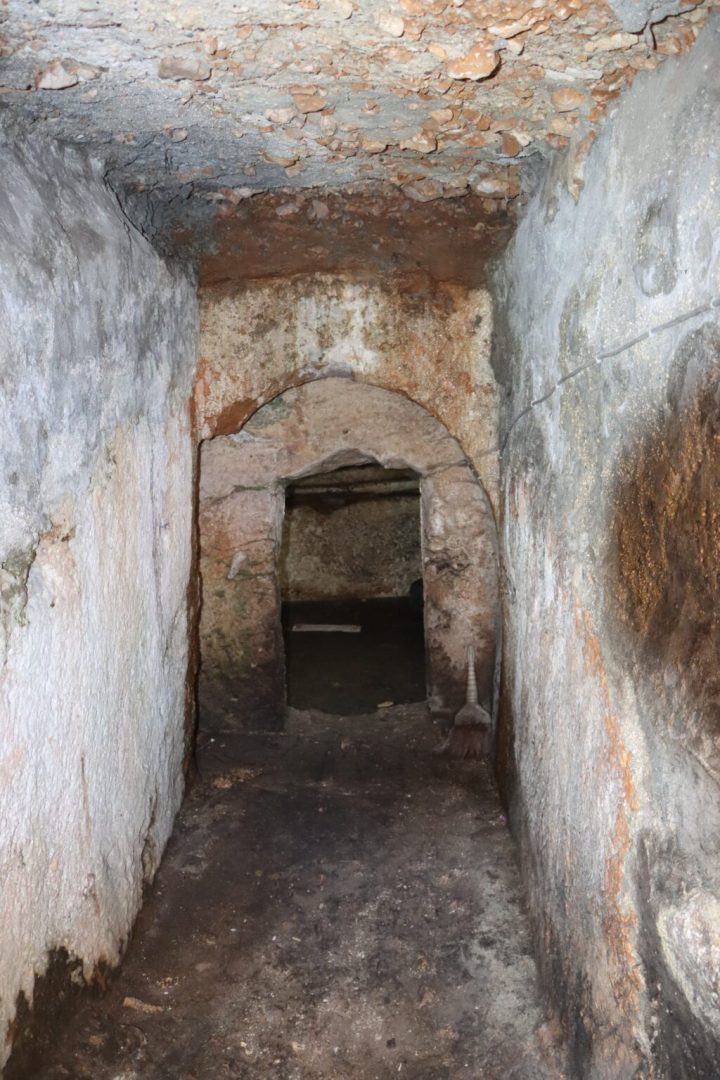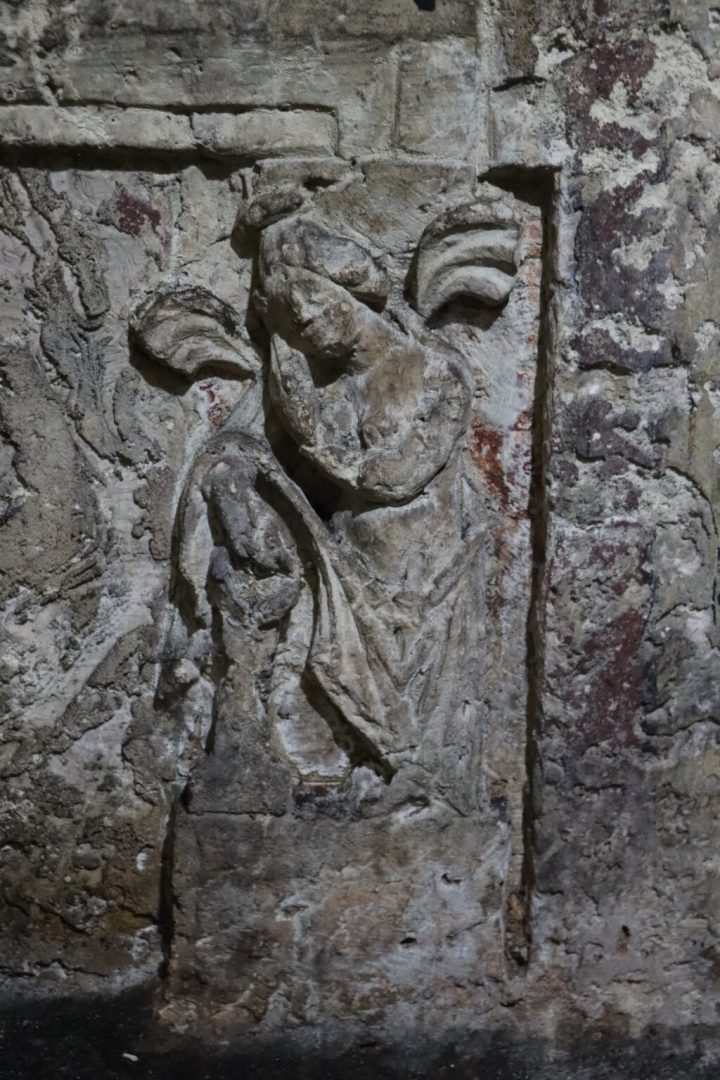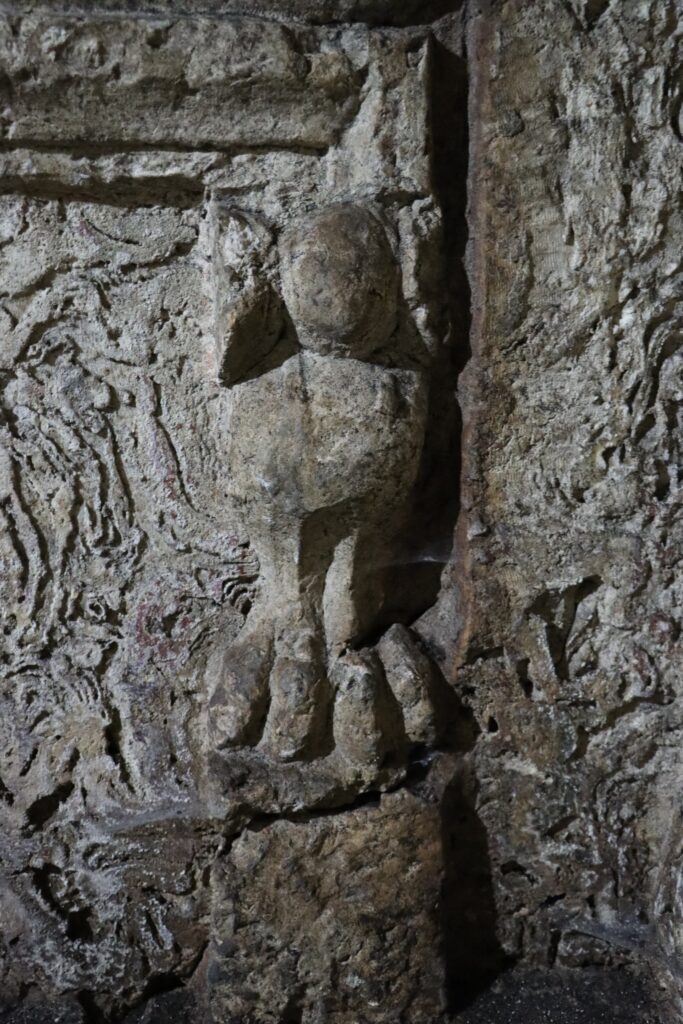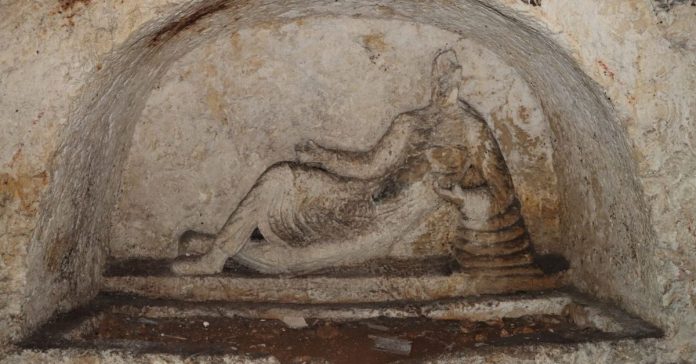Hasan Şıldak, the governor of Şanlıurfa in southeastern Türkiye, announced through his social media the discovery of an important rock-cut tomb found in the courtyard of a residential property. The discovery was part of the ongoing Cultural Inventory Project, which seeks to catalog heritage sites in the Eyyübiye district.
The Discovery

Initial reports describe the tomb as a single-chamber structure embellished with intricate reliefs. Among the carvings, a male figure reclining on his left arm adorns one wall. While winged female motifs flank the remaining corners. Additional reliefs decorate other sections of the chamber. Although an inscription near the entrance, painted in ochre, has deteriorated over time, rendering its text indecipherable. Experts emphasize that precise dating of the tomb will require further archaeological and analytical studies, as current assessments remain inconclusive.
Tomb Context

Şanlıurfa, renowned for its deep historical roots, is home to numerous ancient rock-carved tombs that shed light on the region’s cultural legacy. Typically hewn directly into stone, these structures often feature elaborate carvings reflecting artistic and societal traditions. Most tombs in the area are attributed to the Late Hittite era (9th–7th centuries BCE) or the Roman period (1st–4th centuries CE), based on architectural style, artifacts, and decorative motifs.
The reliefs within these tombs hold immense cultural value, offering insights into the religious practices, social hierarchies, and daily life of ancient communities. Common themes include:
- Human Depictions: Male and female figures showcasing period-specific attire and societal roles.
- Animal Imagery: Frequent representations of hunting scenes and symbolic fauna, hinting at livelihood practices.
- Mythological Narratives: Scenes blending legend and spirituality, illustrating ancestral belief systems.
- Botanical and Geometric Designs: Floral patterns symbolizing nature’s vitality, alongside abstract shapes highlighting artistic innovation.

These carvings not only beautify the tombs but also serve as historical records, showcasing changes in cultural dynamics over time. Researchers are still examining these elements to gain a deeper understanding of the relationship between art, religion, and daily life in ancient times.

